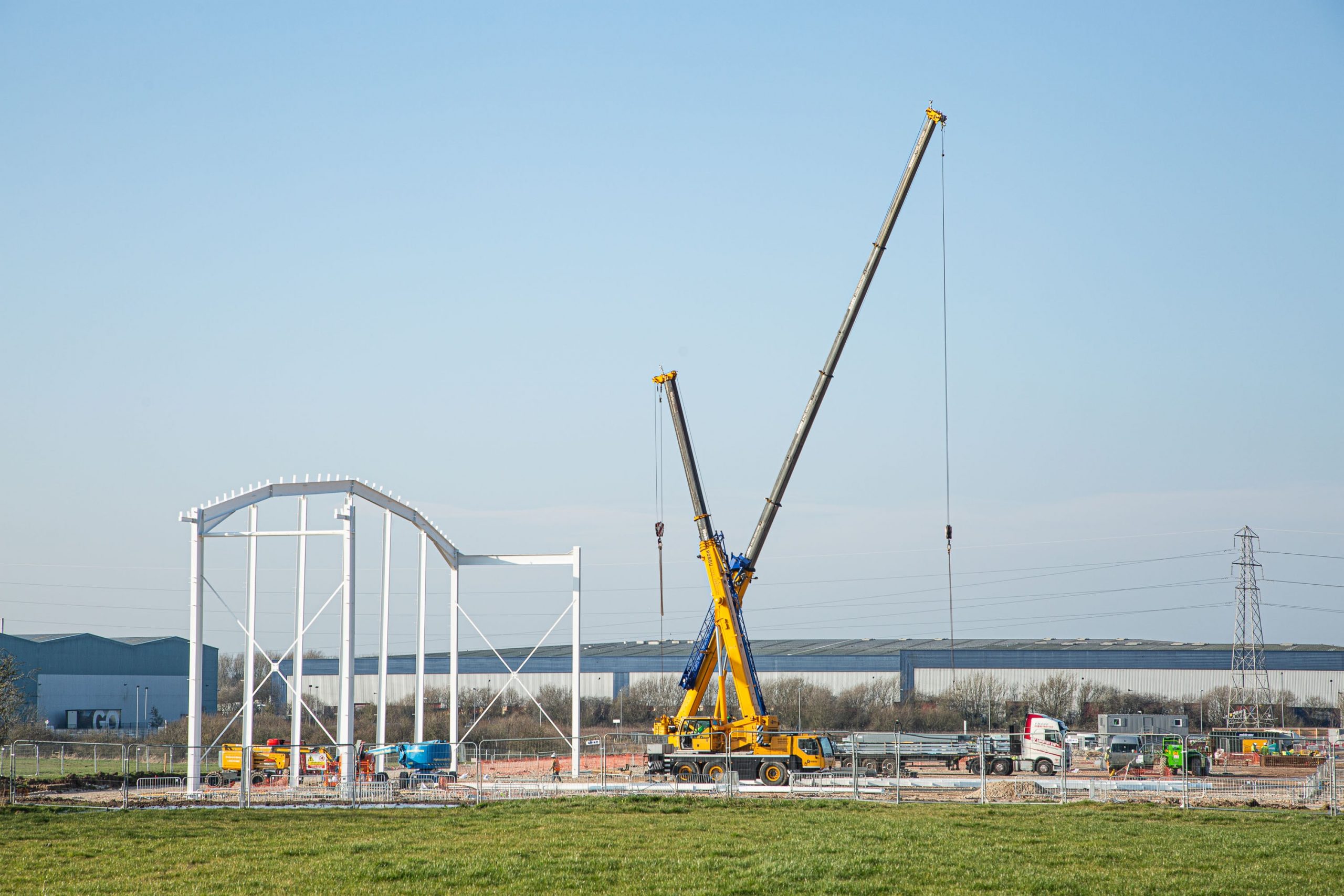When it comes to the construction industry, it’s essential to place utmost priority on safety and security. Designing and constructing heavy structures requires extra care and attention, as it often involves large, powerful machinery, hazardous environments, and an abundance of potential risks which must be managed accordingly.
Health and safety on construction sites must be established as one of the foremost objectives in order to guarantee the safety of both workers and bystanders and ensure a reliable, quality product in the end.
Establishing policies, adopting best practices, and guaranteeing that proper resources and protective gear are available and maintained are all essential in order to maintain the most efficient and secure construction site possible.
Identifying Safety Risks
When it comes to working on a construction site, the environment is constantly changing, and thus it is highly important that workers are aware of the potential risks and hazards they face. Risk assessment and preparation are essential processes of any construction project, as potential risks must be identified and addressed before the project can begin.
Identifying some of the more common risks on construction sites, such as the use of hazardous materials, the presence of heavy machinery, extreme weather conditions, and human error, are all essential steps of the process.
Furthermore, employers must ensure that employees have proper knowledge and understanding of the risks present in order to make sure that safety protocols are followed and that no serious incidents are caused.
Once the potential risks have been identified, manufacturers must take the necessary steps to limit the chances of any kind of accident occurring. This may mean ensuring that all machines and pieces of equipment are well maintained and that workers understand the importance of following safety guidelines.
Tasks such as cleaning, maintaining equipment, and preparing safety protocols must all be downloaded to ensure that workers are kept safe during operations. Additionally, regular safety inspections should be carried out in order to make sure that all protocols are being followed as set out.
In order to adequately protect workers and manage any risks, it’s imperative that manufacturers provide proper safety gear such as hard hats, safety harnesses, protective clothing and eyewear. Not only do these items maintain the safety of individuals working on the construction site, but they also provide the necessary protection to ensure that any projects, and products, are constructed to a high-quality standard.
Employers must ensure that employees are provided with adequate gear, and, more importantly, that said gear is well maintained and regularly replaced if wear and tear becomes apparent.
Implementing Safety Policies
It’s essential for manufacturers to provide their workers access to necessary safety policies and inform them of proper protocols. Having access to the necessary information and resources is necessary for manufacturers to guarantee the safety of their workers and the quality of construction projects.
It’s key that employers provide their employees with detailed descriptions and procedures of each specific role operated within the company as well as provide clear descriptions of the general safety protocol implemented throughout the company.
Having an outline of both specific and general safety protocol documented within the company allows employees to gain better understanding of how to best prevent the potential risks and hazards associated with their work.
Detailed instructions and precautions should be provided in order to make sure that workers understand exactly what they are expected to do and how they should act. Outlining the key safety protocols both clearly and legibly is essential as it defines the protocol to be followed and ensures that employees are aware of their responsibilities in helping maintain safety within the construction site.
Additionally, employers are responsible for providing workers with the necessary training and certification to prove that the individual is qualified for their role. It’s essential that all workers have the necessary capabilities and knowledge to perform their roles with confidence and skill, and enrolling in appropriate courses is the best way to gain greater insight and awareness on the matter.
Employers should provide access to training and certification programs to ensure maximum efficiency and adherence to safety protocol, and should also introduce regular refresher courses in order to maintain employee performance and keep them up to date on changing safety protocols.
Construction Site Best Practices
In order to ensure the most efficient and safest working environment possible, employers must provide their workers with access to a wide range of best practices and health and safety guidelines. Implementing such protocols will ensure that potential risks and hazards are managed appropriately and that workers are kept safe.
When designing and constructing a construction site, one of the most important aspect is the design of the site itself. It is essential that sites are well planned, organized and prepared with necessary vicinity in order to make sure that operations can be carried out with maximum efficiency and minimum disruption.
Employers must ensure that the necessary access and facilities are available in order to guarantee that the construction site is free from unnecessary hazards, that regulations are adhered to, and that workers’ safety is guaranteed.
In addition, safety and secure practices must be adhered to when carrying out construction operations. During construction, it is essential that protective clothing is worn, that hazardous materials are handled correctly, and that the area is regularly subjected to safety inspections in order to ensure that all safety protocols are followed.
Furthermore, employers must ensure that all workers are aware of their duties at all times, and it’s a must that proper communication and cooperation is used in order to maintain a working environment that is effective, efficient and safe.
Finally, employers must ensure that any incidents are reported promptly and the necessary action taken in order to prevent further issues from arising. Incidents such as injuries or damage to equipment or property must be addressed and relevant procedures put in place in order to avoid similar issues in the future.
Providing proper reporting procedures, training and additional resources are key in helping manage any kind of incident which may arise and allow employers to protect both workers and products.
Protective Equipment
When operating on a construction site, it’s not just knowledge of safety protocols that workers need, but also the necessary protective equipment to ensure the safety of everyone involved.
Employers must ensure that they provide workers with the proper gear and ensure that all workers have access to the appropriate and necessary protective clothing, eyewear and helmets in order to guarantee the maximum level of security.
It’s essential for protective gear to meet the requirements outlined for the specific job. Substandard equipment, or any equipment that is damaged or outdated, can not only cause safety issues but also fines from regulators, risks to legal and financial obligations, reputational damage, and more.
Therefore it’s key that employers provide workers with the highest quality of protective gear and make sure that said equipment is properly certified and maintained regularly throughout the course of the project.
It’s also important that the appropriate safety equipment is purchased depending on the specific environment of the project. In areas with overhead work, such as scaffolding or rigging, it’s necessary to provide workers with the necessary safety harnesses and lanyards, while areas with hazardous chemicals require proper protective clothing, respirators and gloves.
Employers must also ensure that workers understand the importance of wearing proper equipment and the implications associated with not wearing the necessary items.
This can include guidelines such as using ladders only when necessary, understanding the danger of working at heights, and the importance of wearing proper gowns and masks in hazardous environments.
Regular Safety Inspections
Safety inspections are an essential part of any construction site, as they ensure that the environment is safe, secure and regulated.
Carrying out regular safety inspections can help make sure that all safety protocols are being adhered to and that workers are being provided with the necessary guidance and support to maintain maximum safety levels.
When carrying out inspections, it’s important that supervisors check that protective gear is being used correctly and make note of any areas of concern.
It’s also important that supervisors check that employees are aware of their individual roles, tasks and responsibilities and enforce any safety regulations which are in place.
When it comes to the inspection process, it’s important that all safety policies, protocols and necessary information is made readily available to supervisors and workers.
Employers must also ensure that communication and feedback takes place between workers and supervisors so that any issues which may arise can be addressed quickly and effectively.
Finally, manufacturers must keep records of all inspections and any associated notes or comments. Having a reference to these records can prove invaluable when managing any potential workplace hazards, as it allows employers to track potential risks and identify areas where extra attention and training may be necessary.
Recording details such as time and date of inspections, supervisor and employee signatures, and notes of any hazards can prove invaluable in helping managers handle any potential risks and put into place the necessary preventative measures.
Conclusion
As we have explored, adequate health and safety on construction sites requires both proper protocols, and plans, as well as dedicated resources and personnel. Establishing and maintaining a safe and secure environment is essential in order to protect workers and bystanders, guarantee the quality of the products being manufactured, and abide by regulations set out by authorities.
Employers have the responsibility to provide their workers with the necessary gear, enforce proper safety protocols, and maintain the necessary records and documentation with regards to safety.
At the end of the day, the job of manufacturers goes above and beyond ensuring product and financial safety, as protecting their workers is equally as important, if not more. Ultimately, dedicating resources and personnel to adequate health and safety is essential in order to responsibly manage any potential risks and hazards on construction sites.







